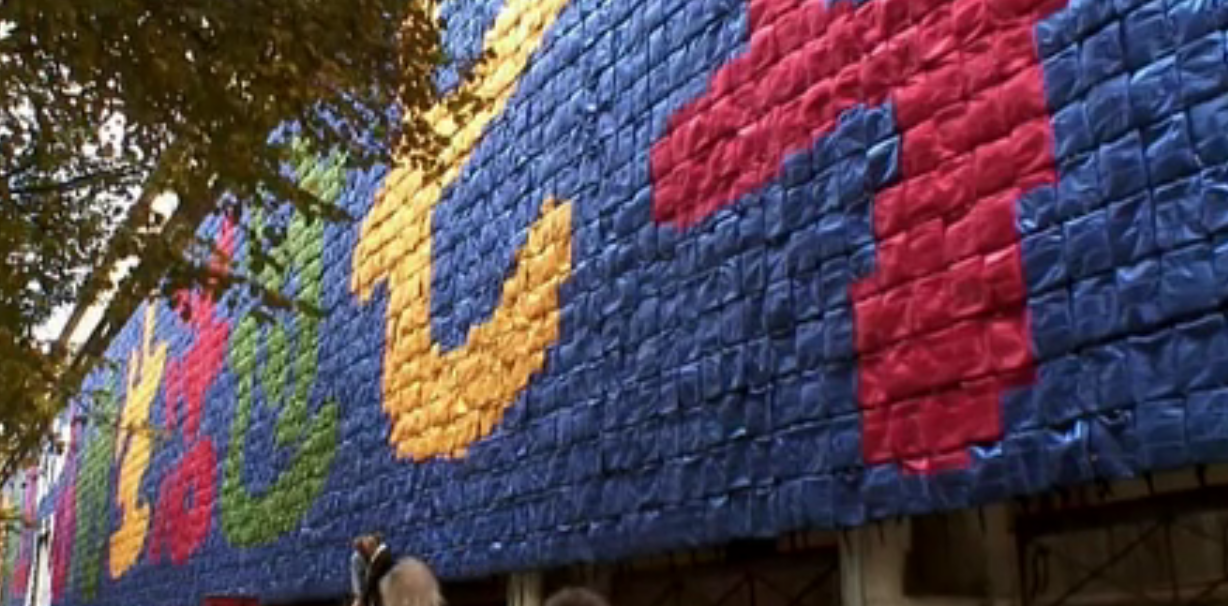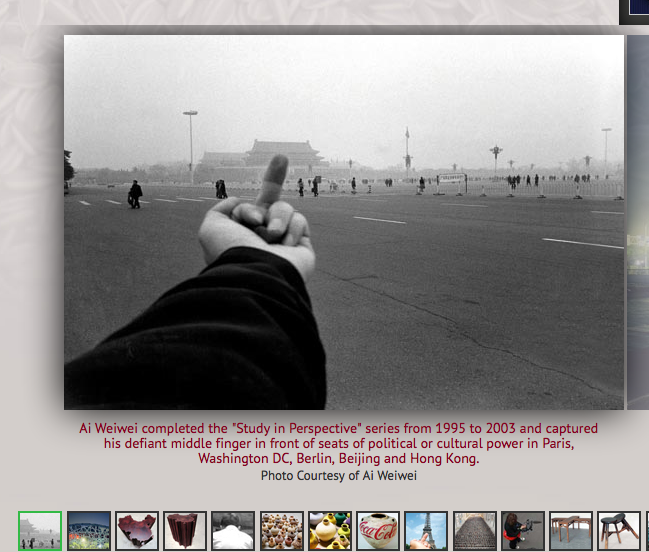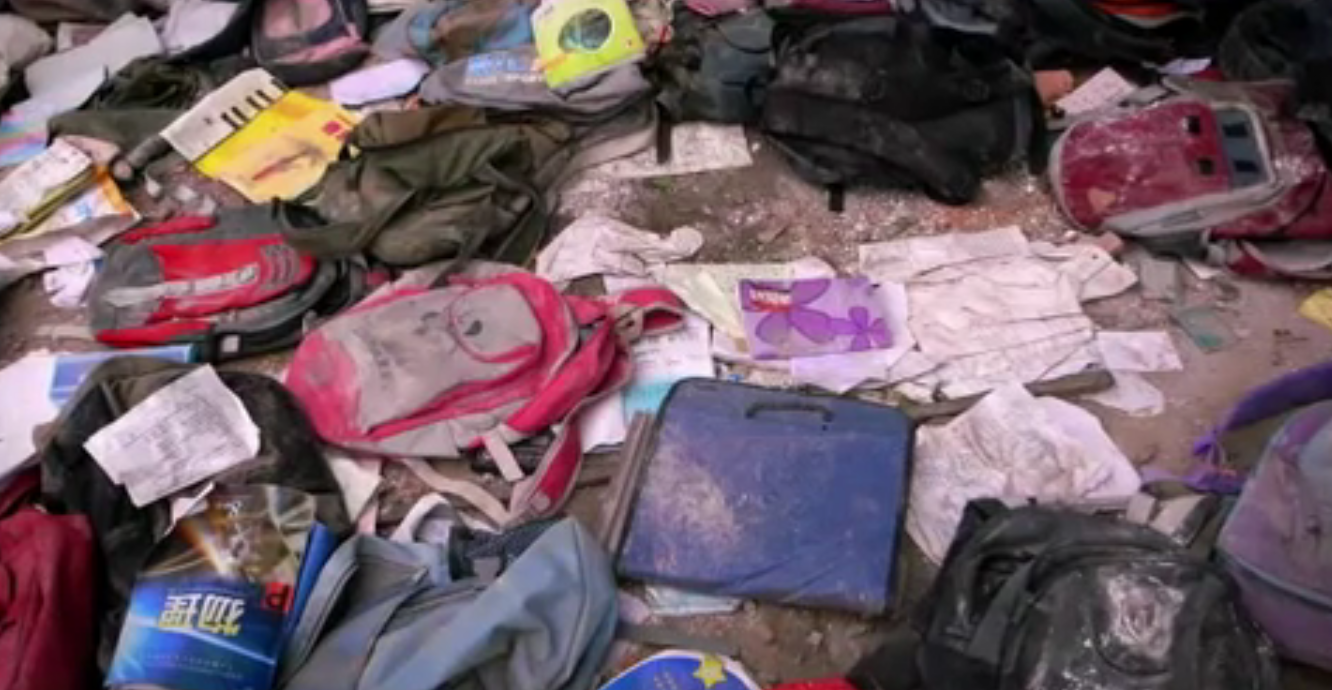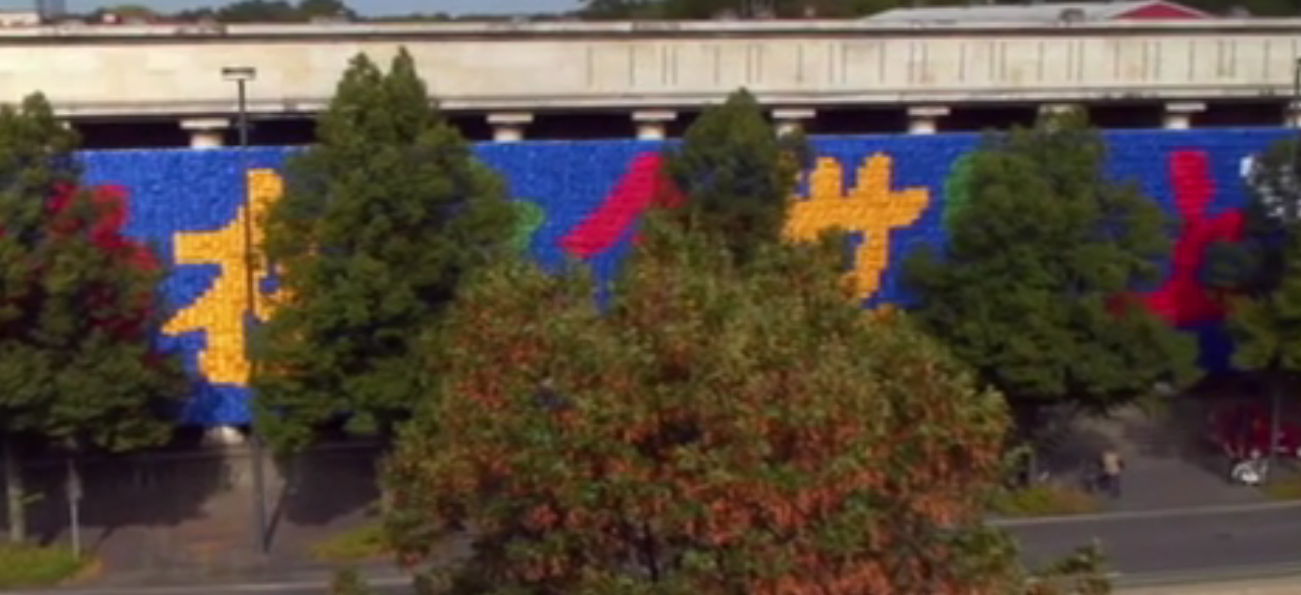
Image credit: Screenshot, "Who's Afraid of Ai Weiwei?" Frontline
After last week's posts examining representations of the aftermath of the events in Japan, I was especially taken by moving and controversial images from last night's Frontline piece tonight on Chinese artist Ai Weiwei dealing with the aftermath of the 2008 earthquake that devastated the Sichuan province.
Ai has come under intense scrutiny for speaking out against the Chinese government in recent years, and a studio that took him two years to build was torn down in January. The Frontline documentary by filmmaker Alison Klayman highlights many of his subversive actions and the ways in which he uses new media, particularly Twitter, to reach a broader audience and challenge the boundaries of censorship. Ai has advocated democracy in China and supported 2010 Nobel Prize recepient Liu Xiaobo (New York Times). Liu appears in the piece.

Image credit: Screenshot, pbs.org
Weiwei was particularly critical of the government refusal to take responsibility for what many viewed as flimsy construction of government housing and school buildings in the Sichuan province. After visiting the area and documenting its appearance, Ai was quite stunned by an image of children's backpacks (below):

Image credit: Screenshot, "Who's Afraid of Ai Weiwei?" Frontline
In addition to surveying local survivors to document the number of deceased children and releasing those figures online, Ai a piece that functions as both an homage to the deceased children. The enormous installation covers a significant part of the exterior of the Haus der Kunst in Munich. The backpacks spell out a statement made to Ai by a mother of one of the victims--"She lived happily on this earth for seven years."

Image credit: Screenshot, "Who's Afraid of Ai Weiwei?" Frontline
I don't have an extended analysis to offer for any of these images, but I am struck by the potential of documentary image (and Ai's extensive record-keeping) both as a communicator of pathos and as essential to artistic process. Also worth noting is the ability of the everyday object, particularly in our commodity-driven cultures, to communicate when multiplied and poised in a certain context. Ai is often called the Chinese Andy Warhol, but his multiplication of a mass-produced item, here a backpack, still insists on a human attachment to the mechanically made. Rather than stop at criticizing mass production or inscribing it glamorous irony, Ai Weiwei insists on its dual ability to invoke destruction on a grand scale and evoke, without fully representing, the particular.




Recent comments
2 years 29 weeks ago
2 years 44 weeks ago
2 years 44 weeks ago
2 years 50 weeks ago
3 years 4 weeks ago
3 years 4 weeks ago
3 years 4 weeks ago
3 years 6 weeks ago
3 years 6 weeks ago
3 years 6 weeks ago